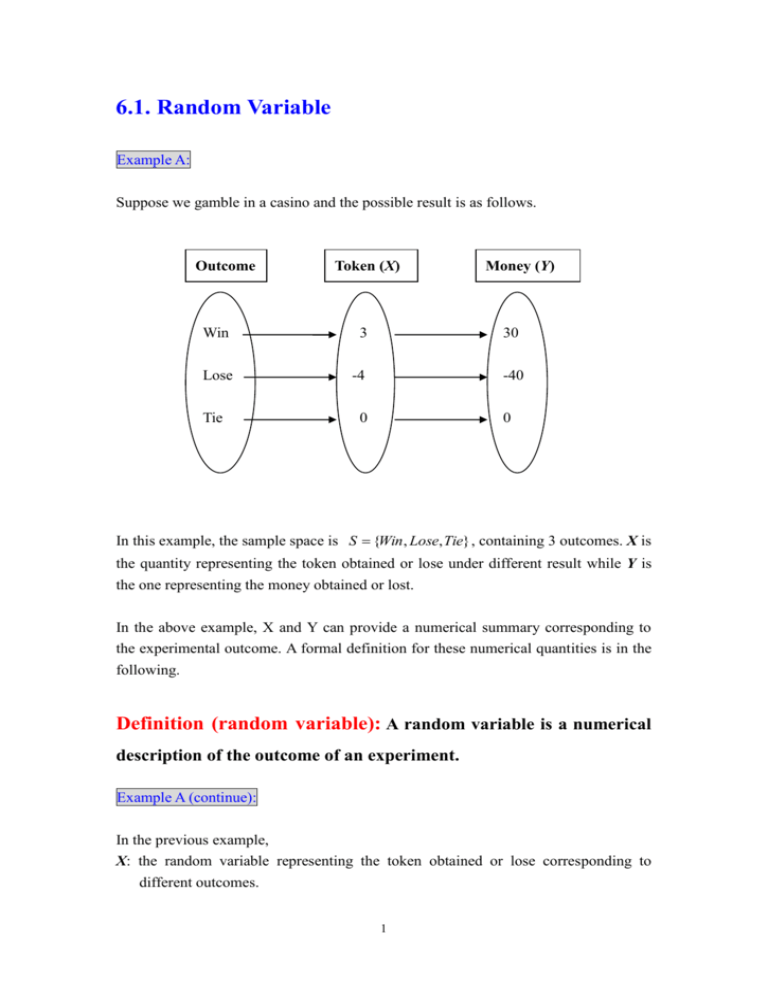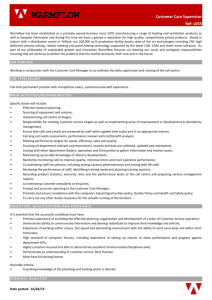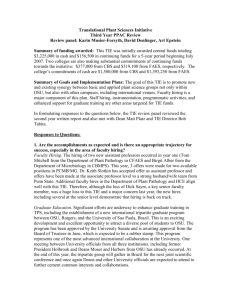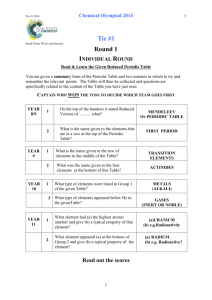6.1 Random variable
advertisement

6.1. Random Variable
Example A:
Suppose we gamble in a casino and the possible result is as follows.
Outcome
Token (X)
Win
3
Lose
-4
Tie
Money (Y)
30
-40
0
0
In this example, the sample space is S {Win , Lose, Tie} , containing 3 outcomes. X is
the quantity representing the token obtained or lose under different result while Y is
the one representing the money obtained or lost.
In the above example, X and Y can provide a numerical summary corresponding to
the experimental outcome. A formal definition for these numerical quantities is in the
following.
Definition (random variable): A random variable is a numerical
description of the outcome of an experiment.
Example A (continue):
In the previous example,
X: the random variable representing the token obtained or lose corresponding to
different outcomes.
1
Y: the random variable representing the money obtained or lose corresponding to
different outcomes.
X has 3 possible values corresponding to 3 outcomes
X ({Win}) 3, X ({Lose}) 4, X ({Tie}) 0
Y has 3 possible values corresponding to 3 outcomes
Y ({Win}) 30, Y ({Lose}) 40, Y ({Tie}) 0 .
Note that
Y 10 X
,
since
Y {{Win}) 30 10 X ({Win}), Y ({Lose}) 40 10 X ({Lose}),
Y ({Tie}) 0 10 X ({Tie})
That is, Y is 10 times of X under all possible experimental outcomes.
There are two types of random variables. They are:
Discrete random variable: a quantity assumes either a finite
number of values or an infinite sequence of values, such as 0, 1, 2,
Continuous random variable: a quantity assumes any numerical
value in an interval or collection of intervals, such as time, weight,
distance, and temperature.
Example B:
Let the sample space
S {z | z is the delay time for a flight, 0 z 1} .
Let Z be the random variable representing the delay flight time, defined as
Z ({z t}) Z ({the flight tim e is t}) t ,0 t 1.
2
For example, Z 0.5 corresponds to the outcome that the flight time is 0.5 hour (30
minutes) late.
Online Exercise:
Exercise 6.1.1
3











